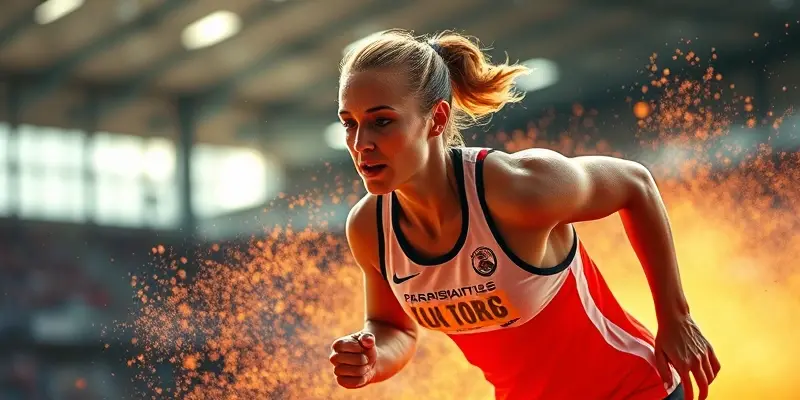Staying healthy and injury-free is every athlete’s dream—whether you’re just getting started or pushing for a new personal best. But what if cutting-edge technology could spot trouble before it happens, guide your recovery, and help you come back even stronger? Today, AI coaching software is leading a revolution in injury prevention and recovery for fitness enthusiasts and athletes at all levels. Let’s explore how these powerful tools make safer, smarter training accessible for everyone.
How AI Coaching Prevents Injuries Before They Happen
Injuries can bench you for weeks, sometimes months. But AI-driven platforms are changing the rules with proactive, real-time solutions:
- Predictive Analytics: By analyzing thousands of data points—from your workout logs to your sleep quality—AI identifies subtle patterns that often precede common injuries like hamstring strains or stress fractures. For example, if an algorithm notices your running cadence dropping and sleep getting shorter, it can flag you and your coach before a problem surfaces.
- Form Correction: Using wearable sensors or your smartphone camera, AI provides instant feedback on your technique. Are your knees caving in during squats? Is your foot strike off when running? AI tools address these issues before they lead to pain, helping both beginners avoid bad habits and advanced athletes fine-tune their form.
Example:
Lisa, a beginner, receives real-time corrections in her yoga poses through her smartwatch. Meanwhile, Omar, a competitive sprinter, gets prompted by his AI coach to adjust his stride after data shows early signs of calf strain.
Accelerating Recovery & Ensuring Safe Return-to-Play
When injury does happen, the focus quickly shifts to healing—without rushing back too soon. Here’s how AI bridges that gap:
- Personalized Rehab Plans: AI monitors your progress—think heart rate, muscle fatigue, and rest quality—and adapts your rehab program day by day. No more one-size-fits-all approaches. For more detailed strategies, check out our injury recovery checklist that complements AI personalization.
- Load Management: Training too hard, too quickly is a recipe for setbacks. AI automatically tracks your workloads and recovery status, adjusting intensity to keep you safely on track.
- Progress Tracking: Milestone visuals and daily “readiness” scores keep you motivated and informed throughout your recovery journey.
Case in point:
A professional soccer player uses an AI app to guide her through targeted strength exercises post-injury, receiving daily adjustments based on her muscle readiness. Weekend warriors can benefit in exactly the same way, using wearable feedback to decide if they’re ready to push or need another day’s rest.
Nutrition, Lifestyle & Mindset: The Complete Recovery Package
You’re more than just muscles and joints. AI-powered platforms consider nutrition, sleep, and even your motivation levels for holistic recovery.
- Dietary Analysis: Apps can assess your food intake and hydration, then tailor recommendations to speed up tissue repair or reduce inflammation.
- Sleep Monitoring: Poor sleep delays healing. AI tracks your rest quality and encourages habits proven to accelerate recovery.
- Mental Support: Hit a motivation slump? AI detects patterns in workout adherence and offers timely reminders or supportive messages to keep you moving forward.
Actionable Tip:
Integrate your diet tracker, sleep app, and workout log—for free—using many of today’s AI recovery platforms and see how small changes add up.
The Most Frequent Injuries—And How AI Tackles Them
From weekend hobbyist to elite athlete, certain injuries show up again and again:
- Muscle strains: Hamstring, calf, or back
- Ligament sprains: Ankle, knee
- Stress fractures and tendonitis
AI’s ability to spot early warning signs and adapt your routines means these injuries no longer have to sideline your progress. Think of it like having a personal “health radar,” always alert but never in the way.
A Beginner’s Guide: Choosing the Right AI Recovery Tools
Ready to embrace smart recovery? Here’s how to get started:
- Assess Your Needs: Are you looking to prevent injuries, recover from one, or optimize both?
- Check Features: Look for platforms that offer wearable integration, form feedback, nutrition and sleep insights, and personalized programming.
- Start Simple: Many apps offer beginner-friendly onboarding—no tech expertise required!
- Monitor and Adjust: Trust the data, but also listen to your body. Use AI guidance as a smart assistant, not a dictator.
Conclusion: Train Smart, Stay Strong
AI-powered coaching is no longer a distant dream—it’s the new standard for injury prevention, faster recovery, and maximizing your performance. Whether you’re running your first 5K or eyeing the podium, integrating these tools into your routine can keep you healthy, motivated, and at your best.
Why not let technology work for your fitness journey? The next step toward pain-free performance might be just an app away.
Stay active. Stay strong. And let the future of recovery work for you—one smart step at a time.

